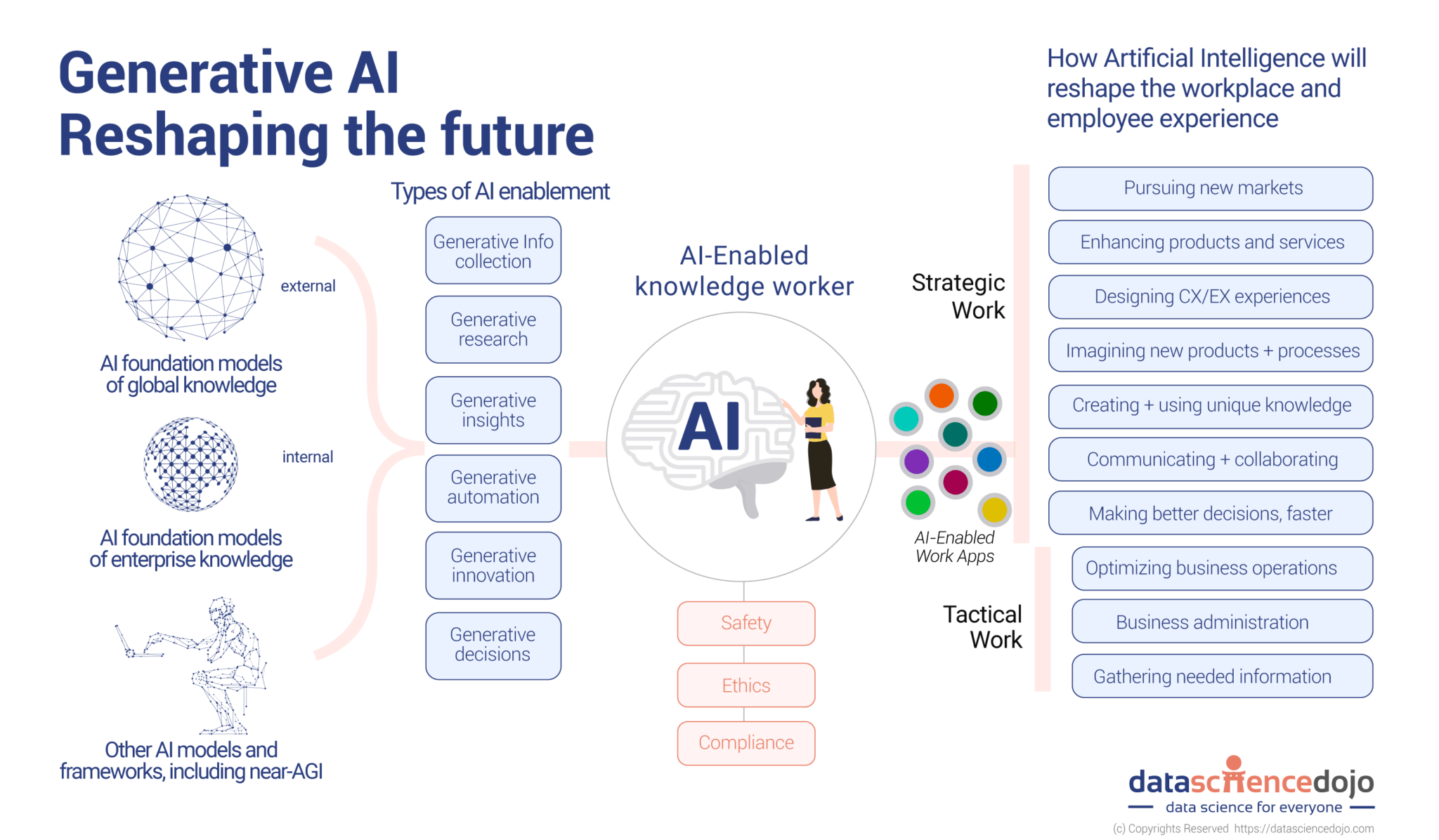
The Cutting-Edge Advancements in Generative AIThe Cutting-Edge Advancements in Generative AI Generative artificial intelligence (AI) has emerged as a transformative technology, unlocking unprecedented possibilities in fields ranging from art and entertainment to scientific research. Here are some of the cutting-edge advancements that are shaping the landscape of generative AI: Generative Adversarial Networks (GANs) GANs are a class of generative models that consist of two networks: a generator and a discriminator. The generator creates new data that resembles the training data, while the discriminator attempts to distinguish between real and generated data. This adversarial training process allows GANs to produce highly realistic images, videos, and other content. Transformer-Based Language Models Transformer-based models, such as GPT-3, BERT, and T5, are a type of neural network that excels in natural language processing. They are capable of generating human-like text, translating languages, writing different types of content, and answering questions with a high degree of accuracy and coherence. Diffusion Models Diffusion models are a class of generative models that start with a random noise distribution and gradually “de-noise” it to produce a realistic output. This technique has achieved remarkable results in image generation, outperforming GANs in certain aspects, such as capturing fine details and textures. Autoregressive Models Autoregressive models, such as autoregressive language models (ARMs), generate data one element at a time, based on the previously generated elements. They are known for their ability to produce highly coherent and structured outputs, making them suitable for text generation, music composition, and language translation. Prompt Engineering Prompt engineering involves crafting specific prompts that guide generative AI models in the desired direction. By carefully designing prompts, users can control the style, content, and characteristics of the generated outputs, unlocking a vast range of creative applications. Multi-Modal Generative Models Multi-modal generative models are capable of generating multiple types of media, such as images, text, and audio. They combine different generative techniques to create immersive and cohesive experiences, opening up new possibilities for storytelling, education, and entertainment. Applications of Generative AI These advancements in generative AI are driving innovation in numerous industries: * Art and Entertainment: Creating realistic images, videos, and music. * Content Generation: Automating content creation for marketing, news, and social media. * Scientific Research: Accelerating drug discovery, materials science, and climate modeling. * Education: Personalizing learning experiences and providing interactive learning tools. * Healthcare: Developing diagnostic tools and improving patient care. As generative AI continues to evolve, we can expect even more transformative applications and a profound impact on society. It has the potential to revolutionize industries, automate tasks, and unleash unprecedented creativity and innovation.
Posted inNews